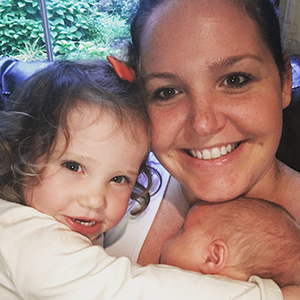
When their daughter, Nora, was born at Hillcrest Hospital in 2015, Lyndsey Bengal and her husband, John, had already planned to donate their baby’s umbilical cord blood to the Cleveland Cord Blood Center, a public cord blood bank.
A few years before Nora’s birth, the Kirtland, Ohio couple had witnessed the lifesaving benefits of umbilical cord blood stem cells when a close family member received a cord blood transplant from a sibling. When the cancer returned, a cord blood match was identified through the national Be The Match Registry, and a second cord blood transplant was performed.
As a clinical staff nurse on Labor & Delivery at Hillcrest Hospital, “every patient that I care for and admit gets educated on cord blood banking. The question is a part of their admission assessment,” she said. “I explain to the patient and family the benefits of the donation process; that it does not interfere with the birth of the baby; and that if the cord blood is not donated, it would be discarded.”
Since Nora’s birth, the couple donated cord blood from the birth of their second daughter and first son to the public cord blood bank, and the family member who received the cord blood transplant is a healthy teen. “I always knew that I would donate my babies’ cord blood. It makes perfect sense to donate when you can potentially save someone’s life.”


